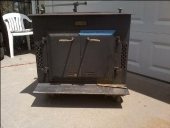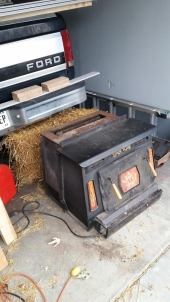
 5
5





 6
6




 1
1




are rocket mass heaters "appropriate technology" given the availability of efficient woodstoves?
Most woodburning enthusiasts (http://www.hearth.com/talk/forums/the-hearth-room-wood-stoves-and-fireplaces.6/) report burning 3-5 cords of wood per season to heat a typical home, depending on the climate. A cord of red oak weighs 3500 lbs and contains 22 MBTU of energy (https://chimneysweeponline.com/howood.htm). How long would it take you to gather 3500 lbs of twigs and sticks to feed your RMH? I understand that twigs are a "free windfall", but at some point your time has some value.







 1
1




Glenn Herbert wrote:One thing you're missing is that rocket mass heaters (and masonry heaters in general) provide gentle heat for 8-24 hours after the fire is out, so even if a woodstove is operating at its lab-tested efficiency, which a properly built RMH will equal or exceed in operation, the RMH is delivering a large portion of heat while not operating. Thus, its daily efficiency is dramatically higher than its instantaneous operating efficiency.
Granted that the best modern woodstoves operated strictly to spec can be quite efficient, an RMH can be more efficient, and an RMH replacing an existing woodstove typically results in using 1/2 to 1/8 of the wood to achieve the same comfort in the same house, by actual reports. So gathering tons of twigs is not an issue. The typical RMH owner who previously used a woodstove will need to collect much less wood than before.
There is definitely a standard, reliable spec for the RMH (which needs to be adapted somewhat to each installation), but the vast number of tinkerers trying to reinvent the wheel tend to confuse the issue, with the ease of throwing an untested experiment up on youtube.
"Twigs" is rather an exaggeration, as the only use for them is generally as kindling. The RMH can use smaller wood than a woodstove, which makes harvest easier in some ways. Limbs that would be wasted in other cases can be cut and maybe split to 3-5" maximum dimensions, and young thinned trees from a woodlot are perfect RMH fuel. If you have modest needs, you may well be able to use deadfall branches and trimmings for your whole supply.
 1
1




R Ranson wrote:
are rocket mass heaters "appropriate technology" given the availability of efficient woodstoves?
This is a really good question.
The answer: yes.
Putting it really simply (because someone will be along in a moment with the technical stuff):
Appropriate Technology can be built and maintained by the user with no specialist training or equipment, using locally available materials. These modern, efficient woodstoves require fancy materials, specialist training, and equipment to build and maintain.
 3
3




Davis Tyler wrote:
Are we talking about some sort of Doomsday Preppers scenario, or state-of-the-world today? The woodstoves I'm talking about are basically a cast iron box plus a platinum catalyst. Others like the Englander NC-30 replace the catalyst with "secondary burn tubes". They don't require any more specialist training to operate than any other new tool. Basically, read and follow the manual, and pay attention to what you're doing. The Blaze King has a thermostatically controlled air damper that meters out the heat while preventing overfires. Cast iron woodstoves last for decades with essentially no maintenance besides replacing the catalyst once every five years.
If we're talking about some future scenario where iron and steel foundry and forge services are no longer available, then your refractory bricks and mortar will also be unavailable.







 3
3




R Ranson wrote:
Davis Tyler wrote:
Are we talking about some sort of Doomsday Preppers scenario, or state-of-the-world today? The woodstoves I'm talking about are basically a cast iron box plus a platinum catalyst. Others like the Englander NC-30 replace the catalyst with "secondary burn tubes". They don't require any more specialist training to operate than any other new tool. Basically, read and follow the manual, and pay attention to what you're doing. The Blaze King has a thermostatically controlled air damper that meters out the heat while preventing overfires. Cast iron woodstoves last for decades with essentially no maintenance besides replacing the catalyst once every five years.
If we're talking about some future scenario where iron and steel foundry and forge services are no longer available, then your refractory bricks and mortar will also be unavailable.
I suspect, it's our definition of "appropriate technology" that's at odds.
"appropriate technology" as I understand it is easy for anyone in the world, regardless of social-economic status, to use locally available resources to make something useful.
Building a cast iron stove from scratch wouldn't fit into my understanding of "appropriate technology" given the material has to be acquired (mined or salvaged) then put together in a way that is safe (fire in box needs some safety knowledge). Now this is could be possible to do, and people have done it. Building a Platinum catalyst on the other hand... do you see many rural African farmers able to do this (acquire the materials, have the skills and tools, &c) ?
If you want to think about Appropriate Tech as a Doomsday Prepper scenario, feel free to do so if it helps. I think of it as something useful to a subsistence farmer living in any part of the world (not just The West). Appropriate Tech is available to all humans no matter location, resources, and skills. Cast iron and platinum does not fit with my idea of this.
My understanding of a RMH is that it can be adapted to be made with different materials depending on what's available - not all materials will have ideal results, but the design seems somewhat flexible to account for that.
But like I said, I don't have first-hand experience with RMH yet so I can't say which would work better for me.
I think RMH qualify for "appropriate technology" whereas modern woodstoves do not. That was the main question.
Which is "appropriate" for your situation depends entirely on what you want, your lifestyle, your set up, where you are in your life... and many other things. I love my modern free standing woodstove, I think I would also like a RMH.
 1
1




Idle dreamer




Tyler Ludens wrote:I think it might be easy for some people to confuse rocket mass heaters with rocket stoves. You can make a rocket stove for cooking out of junk, dirt, and rocks. When it fails you just build another one. But a rocket mass heater is a permanent fixture in the home and needs to be made of permanent materials such as refractory bricks, etc.
 1
1




Idle dreamer

 2
2








Idle dreamer

 2
2




 1
1




Idle dreamer















Tyler Ludens wrote:The main difference I see between the woodstove and the rocket mass heater is the mass of the heater provides a longer period of heating between firings compared to the woodstove. So a RMH might be more appropriate in a locale where it gets cold and stays cold, and totally inappropriate (in my opinion) in a place where temperatures fluctuate a lot during the cold season, such as my locale.

 1
1




 2
2




Idle dreamer

 1
1




 1
1




Tyler Ludens wrote:Those wood stoves are very expensive!
 1
1




Glenn Herbert wrote:I would ask, since you have obviously looked through the woodstove forums a lot, what reduction in wood use has been reported by people who have replaced an old woodstove with the latest efficient models?
If they have cut wood use in half or less, the fact would presumably be significant enough to mention.

 2
2




 1
1




Davis Tyler wrote: Especially if you have to rebuild the core every few years due to high temperature.
Idle dreamer




R Ranson wrote:So is the question: are RMHs made with ideal materials and technique, more efficient than modern cast iron 'efficient woodstoves'?
Or are we comparing modern woodstoves to the RMH made from local resources?
Or is the question if the RMH appropriate for your specific situation?
Before you choose one, check out this thread about what it means to say a wood stove is efficient and how rocket mass heaters fit with the numbers.




Tyler Ludens wrote:
Davis Tyler wrote: Especially if you have to rebuild the core every few years due to high temperature.
Why would you need to rebuild it if you bought $500 worth of durable refractory materials (I'm guessing that is what the $500 is for since we were talking about building RMH with locally available materials except the core)?









Glenn Herbert wrote:What more extraordinary evidence can you get than actual reports of average wood use? Greater numbers of such reports are obviously desirable. Ernie and Erica Wisner, who have built or consulted on many hundreds of RMH builds in their career, would be in a good position to have gathered these reports. They reported for themselves that their first RMH reduced average wood use from 3-4 cords to less than 1/2 cord per year.









Glenn Herbert wrote:Using all new material, the firebrick would cost around $200 depending on local availability, a good used 55 gallon drum may cost $20 if you can't find one free, ducting or stovepipe may run $50-200 depending on design. The big thing is an insulated chimney which is recommended for safety and posterity (in case a future owner decides to tear out the RMH and put in a woodstove), which will cost the same thousand or two no matter what system you have.




Glenn Herbert wrote:I think most core rebuilds were due to not following published best practices closely, either in configuration or materials. Some were using cast refractory in areas where the user was very rough with feeding and had heavy heating loads.
I don't recall seeing any core rebuilds of all-firebrick with external insulation, at least not due to deterioration.
 4
4




Idle dreamer




Tyler Ludens wrote:It looks like a properly constructed RMH is still a better deal than a new efficient wood stove. $3000 is not a trivial amount of money if your annual income is small.

 1
1




 3
3




Idle dreamer










 2
2








Glenn Herbert wrote:Decreased wood consumption is a byproduct of greater seasonal efficiency, but one of the best drivers to actual impetus to build one.
Another factor to consider is that an RMH does not have to include a 55 gallon drum. There are tested configurations that look more like traditional masonry heaters. These may cost more in materials and skill to build than cob & barrel RMHs.
 5
5




 3
3




Davis Tyler wrote: bell designs are much more visually appealing.
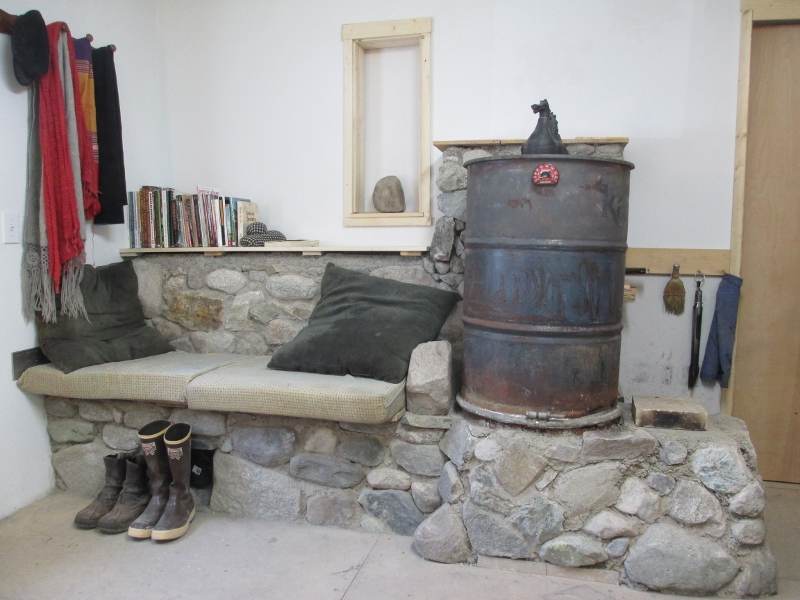
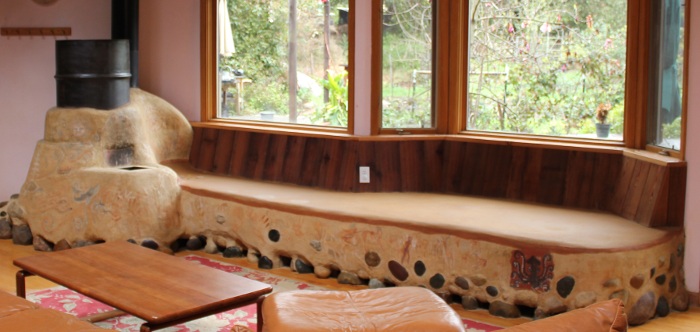

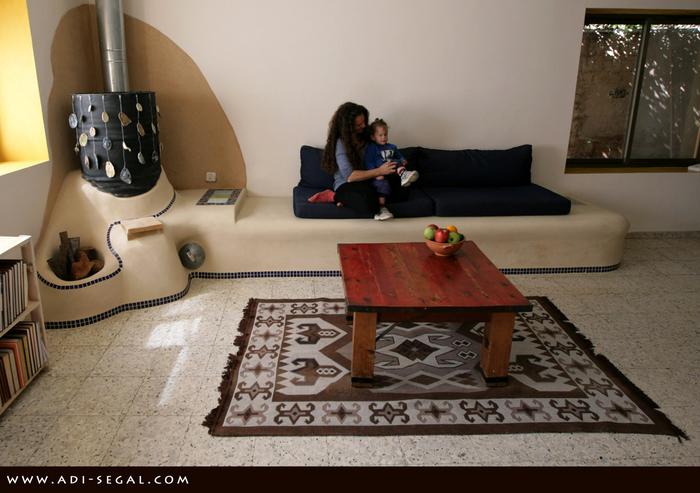

|
Don't count your weasels before they've popped. And now for a mulberry bush related tiny ad:
Play Your Way to a Sustainable Lifestyle: Uncover Permaculture Principles with Each Card
https://gardener-gift.com/
|


